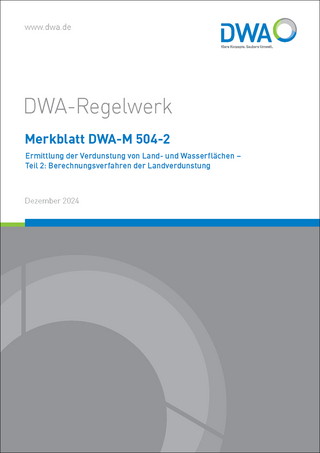
Azar-Hagen Grammar - (AE) - 5th Edition - Chartbook - Fundamentals of English Grammar
Addison Wesley (Verlag)
978-0-13-563570-4 (ISBN)
- Titel z.Zt. nicht lieferbar
- Versandkostenfrei innerhalb Deutschlands
- Auch auf Rechnung
- Verfügbarkeit in der Filiale vor Ort prüfen
- Artikel merken
Using a time-tested approach that has helped millions of students around the world, Fundamentals of English Grammar blends direct grammar instruction with carefully sequenced practice to developspeaking, writing, listening, and reading skills.
The fifth edition has been extensively revised to keep pace with advances in theory and practice, particularly from cognitive science. Now more than ever, teachers will find an extensive range of presentations, activities, and tasks to meet the specific needs of their classes.
New to This Edition
• A pretest at the start of each chapter allows learners to assess what they already know and
orient themselves to the chapter material.
• Practice, spaced out over time, helps students learn better. Numerous exercises have been
added to provide more incremental practice.
• New charts and exercises show patterns to help learners make sense of the information.
• Meaning-based practice is introduced at the sentence level. Students do not have to wait for
longer passages to work with meaning.
• Frequent oral exercises encourage students to speak more naturally and fluidly.
• Step-by-step writing activities promote written fluency. All end-of-chapter tasks include
writing tips and editing checklists.
• A wide range of contextualized exercises, frequently including life skills vocabulary,
encourages authentic language use.
• Updated grammar charts based on corpus research reflect current usage and highlight the
differences between written and spoken English in formal and informal contexts.
• The BlackBookBlog focuses on student success, cultural differences, and life-skills strategies.
• End-of-the-chapter Learning Checks help students assess their learning.
• A Pearson Practice English app with end-of-chapter learning checks, Student
Book audio, and guided PowerPoint videos.
• Revised MyEnglishLab for a fully blended program.
Chapter 1 PRESENT TIME 1-1 Simple Present and Present Progressive 1-2 Forms of the Simple Present and the Present Progressive 1-3 Singular/Plural 1-4 Spelling of Simple Present Verbs: Final -s/-es 1-5 Frequency Adverbs 1-6 Verbs Not Usually Used in the Progressive 1-7 Present Verbs: Short Answers to Yes/No Questions Chapter 2 PAST TIME 2-1 The Simple Past: Regular Verbs 2-2 Expressing Past Time: The Simple Past, Irregular Verbs 2-3 Common Irregular Verbs: A Reference List 2-4 Recognizing Verb Endings and Questions with Did 2-5 Spelling of -ing and -ed Forms 2-6 The Past Progressive 2-7 Simple Past vs. Past Progressive 2-8 Expressing Past Time: Using Time Clauses 2-9 Expressing Past Habit: Used To Chapter 3 FUTURE TIME 3-1 Expressing Future Time: Be Going To and Will 3-2 Forms with Be Going To 3-3 Forms with Will 3-4 Be Going To and Will in Spoken English 3-5 Be Going To vs. Will 3-6 Certainty About the Future 3-7 Expressing the Future in Time Clauses and If-Clauses 3-8 Using the Present Progressive to Express Future Time 3-9 Using the Simple Present to Express Future Time 3-10 Immediate Future: Using Be About To 3-11 Parallel Verbs Chapter 4 PRESENT PERFECT AND PAST PERFECT 4-1 Past Participle 4-2 Introduction to the Present Perfect: Unspecified Time with Ever and Never 4-3 The Present Perfect with Unspecified Time: Already, Yet, Just, Recently 4-4 Present Perfect with Since and For 4-5 Simple Past vs. Present Perfect 4-6 Present Perfect Progressive 4-7 Present Perfect Progressive vs. Present Perfect 4-8 Past Perfect Chapter 5 ASKING QUESTIONS 5-1 Yes/No Questions and Short Answers 5-2 Where, Why, When, What Time, How Come, What … For 5-3 Questions With Who, Whom, and What 5-4 Using What + a Form of Do 5-5 Which vs. What and What Kind Of 5-6 Using How 5-7 Using How Often / How Many Times 5-8 Talking About Distance 5-9 Length of Time: It + Take and How Long; How Many 5-10 Spoken and Written Contractions with Question Words 5-11 More Questions with How 5-12 Using How About and What About 5-13 Tag Questions Chapter 6 NOUNS AND PRONOUNS 6-1 Plural Forms of Nouns 6-2 Pronunciation of Final -s/-es 6-3 Subjects, Verbs, and Objects 6-4 Objects of Prepositions 6-5 Prepositions of Time 6-6 Word Order: Place and Time 6-7 Subject-Verb Agreement 6-8 Using Adjectives to Describe Nouns 6-9 Using Nouns as Adjectives 6-10 Personal Pronouns: Subjects and Objects 6-11 Possessive Nouns 6-12 Using Whose 6-13 Possessive Pronouns and Adjectives 6-14 Reflexive Pronouns 6-15 Singular Forms of Other: Another vs. The Other 6-16 Plural Forms of Other: Other(s) vs. The Other(s) 6-17 Summary: Forms of Other Chapter 7 MODAL AUXILIARIES, THE IMPERATIVE, MAKING SUGGESTIONS, STATING PREFERENCES 7-1 Introduction to Modal Auxiliaries 7-2 Expressing Ability: Can, Could, Be Able To 7-3 Expressing Possibility: May, Might, and Maybe; Expressing Permission: May and Can 7-4 Using Could to Express Possibility 7-5 Polite Requests with I: May, Could, Can 7-6 Polite Requests with You: Would, Could, Will, Can 7-7 Expressing Advice: Should and Ought To 7-8 Expressing Advice: Had Better 7-9 Expressing Necessity: Have To, Have Got To, Must 7-10 Expressing Lack Of Necessity: Do Not Have To; Expressing Prohibition: Must Not 7-11 Making Logical Conclusions: Must 7-12 Tag Questions with Modal Auxiliaries 7-13 Imperative Sentences: Giving Instructions 7-14 Making Suggestions: Let’s and Why Don’t 7-15 Stating Preferences: Prefer, Like … Better, Would Rather 7-16 Summary: Modal Auxiliaries Taught in Chapter 7 Chapter 8 CONNECTING IDEAS: PUNCTUATION AND MEANING 8-1 Connecting Ideas with And 8-2 Connecting Ideas with But and Or 8-3 Connecting Ideas with So 8-4 Using Auxiliary Verbs After But 8-5 Using And + Too, So, Either, Neither 8-6 Connecting Ideas with Because 8-7 Connecting Ideas with Even Though/Although Chapter 9 COMPARISONS 9-1 Introduction to Comparative Forms of Adjectives 9-2 Introduction to Superlative Forms of Adjectives 9-3 Completing Comparatives and Superlatives 9-4 Making Comparisons with Adverbs 9-5 Repeating a Comparative; Using Double Comparatives 4 9-6 Modifying Comparatives with Adjectives and Adverbs 9-7 Negative Comparisons 9-8 Using As … As to Make Comparisons 9-9 Using Less … Than and Not As … As 9-10 Using More with Nouns 9-11 Using The Same, Similar, Different, Like, Alike Chapter 10 THE PASSIVE 10-1 Active and Passive Sentences 10-2 Forming the Passive 10-3 Progressive Forms of the Passive 10-4 Transitive and Intransitive Verbs 10-5 Using the by-Phrase 10-6 Passive Modal Auxiliaries 10-7 Past Participles as Adjectives (Stative or Non-Progressive Passive) 10-8 Participial Adjectives: -ed vs. -ing 10-9 Get + Adjective; Get + Past Participle 10-10 Using Be Used/Accustomed To and Get Used/Accustomed To 10-11 Used To vs. Be Used To 10-12 Using Be Supposed To Chapter 11 COUNT/NONCOUNT NOUNS AND ARTICLES 11-1 A vs. An 11-2 Count and Noncount Nouns 11-3 Noncount Nouns 11-4 More Noncount Nouns 11-5 Using A Lot Of, Some, Several, Many/Much, and A Few/A Little 11-6 Nouns That Can Be Count or Noncount 11-7 Using Units of Measure with Noncount Nouns 11-8 Articles with Count and Noncount Nouns: A/An, The, Ø 11-9 More About Articles 11-10 Using The or Ø with People and Places 11-11 Capitalization Chapter 12 ADJECTIVE CLAUSES 12-1 Adjective Clauses: Introduction 12-2 Using Who and That in Adjective Clauses to Describe People 12-3 Using Object Pronouns in Adjective Clauses to Describe People 12-4 Using Pronouns in Adjective Clauses to Describe Things 12-5 Singular and Plural Verbs in Adjective Clauses 12-6 Using Prepositions in Adjective Clauses 12-7 Using Whose in Adjective Clauses Chapter 13 GERUNDS AND INFINITIVES 13-1 Verb + Gerund 13-2 Go + -ing 13-3 Verb + Infinitive 13-4 Verb + Gerund or Infinitive 13-5 Preposition + Gerund 13-6 Using By and With to Express How Something Is Done 13-7 Using Gerunds as Subjects; Using It + Infinitive 13-8 It + Infinitive: Using For (Someone) 13-9 Expressing Purpose with In Order To and For 13-10 Using Infinitives with Too and Enough Chapter 14 NOUN CLAUSES 14-1 Noun Clauses: Introduction 14-2 Noun Clauses That Begin with a Question Word 14-3 Noun Clauses That Begin with If or Whether 14-4 Noun Clauses That Begin with That 14-5 Other Uses of That-Clauses 14-6 Substituting So for a That-Clause in Conversational Responses 14-7 Quoted Speech 14-8 Quoted Speech vs. Reported Speech 14-9 Verb Forms in Reported Speech 14-10 Common Reporting Verbs: Tell, Ask, Answer/Reply Appendix SUPPLEMENTARY GRAMMAR CHARTS Unit A: A-1 The Principal Parts of a Verb A-2 Common Irregular Verbs: A Reference List A-3 The Present Perfect vs. The Past Perfect A-4 The Past Progressive vs. The Past Perfect A-5 Regular Verbs: Pronunciation of -ed Endings A-6 Pronunciation of Final -s/-es for Verbs and Nouns A-7 Review: Subject and Object Pronouns, Possessive Pronouns and Possessive Adjectives A-8 Comparison of Yes/No and Information Question Forms Unit B: B-1 Phrasal Verbs B-2 Phrasal Verbs: A Reference List Unit C: C-1 Preposition Combinations: Introduction C-2 Preposition Combinations: A Reference List Listening Script Trivia Answers Index Credits
| Erscheinungsdatum | 17.12.2019 |
|---|---|
| Verlagsort | Boston |
| Sprache | englisch |
| Gewicht | 200 g |
| Themenwelt | Naturwissenschaften ► Geowissenschaften ► Hydrologie / Ozeanografie |
| ISBN-10 | 0-13-563570-5 / 0135635705 |
| ISBN-13 | 978-0-13-563570-4 / 9780135635704 |
| Zustand | Neuware |
| Informationen gemäß Produktsicherheitsverordnung (GPSR) | |
| Haben Sie eine Frage zum Produkt? |
aus dem Bereich


